The ISIS Islamic State – Al Qaeda Invasion of Latin America with Indigenous Latino Hispanic Muslims through Central America like Mayan Mexican Muslims Southern Mexico and Guatemala
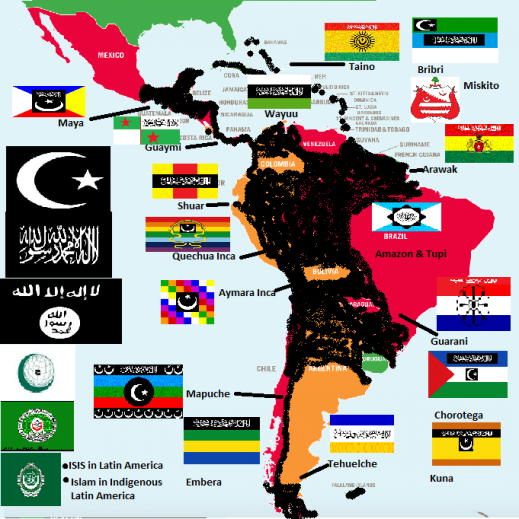
The ISIS Islamic State – Al Qaeda Invasion of Latin America with Indigenous Latino Hispanic Muslims through Central America like Mayan Mexican Muslims Southern Mexico and Guatemala
1) https://isisandislaminlatinamerica.wordpress.com/
2) https://isisandislamlatinamerica.blogspot.com
Translations:
ISIS İslam Devleti – Maya Meksika Müslümanlar Güney Meksika ve Guatemala gibi Orta Amerika’ya Yerli Latino Hispanik Müslümanlar ile Latin Amerika’nın El-Kaide Invasion
L’ISIS Etat islamique – Al Qaïda Invasion d’Amérique latine avec autochtones Latino hispaniques musulmans à travers l’Amérique centrale comme maya musulmans mexicains sud du Mexique et du Guatemala
ISIS Islam Negeri – Al Qaeda Invasi Amerika Latin dengan Adat Latino Muslim Hispanik melalui Amerika Tengah seperti Maya Meksiko Muslim Southern Mexico dan Guatemala
ISIS Islam Negeri – Al Qaeda Pencerobohan Amerika Latin dengan Indigenous Latino Islam Hispanik melalui Amerika Tengah seperti Mayan Mexico Islam Selatan Mexico dan Guatemala
O ISIS Estado Islâmico – Al Qaeda Invasão da América Latina, com indígenas Latino Hispânico muçulmanos através da América Central como maia muçulmanos mexicanos sul do México e Guatemala
El ISIS Estado Islámico – Al Qaeda Invasión de América Latina con indígenas latinos musulmanes hispanos a través de América Central como Maya musulmanes del sur de México y Guatemala, México
আইএসআইএস ইসলামিক স্টেট – আল কায়েদা লাতিন আমেরিকার আদিবাসী ল্যাটিনো হিস্পানিক মুসলমানদের সাথে মায়া মেক্সিক্যান মুসলিমরা দক্ষিণ মেক্সিকো ও গুয়াতেমালা মত মধ্য আমেরিকা মাধ্যমে ইনভেশন
The ISIS Islamic State – Al Qaeda Invasion of Latin America with Indigenous Latino Hispanic Muslims through Central America like Mayan Mexican Muslims Southern Mexico and Guatemala

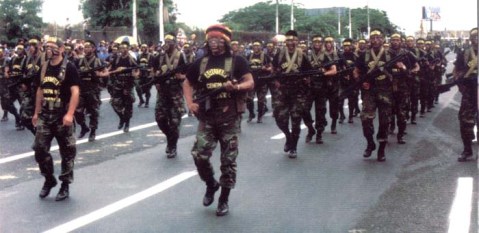
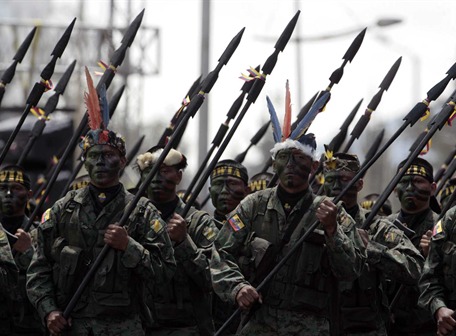

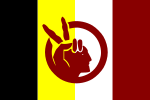


The ISIS Islamic State – Al Qaeda Invasion of Latin America with Indigenous Latino Hispanic Muslims through Central America like Mayan Mexican Muslims Southern Mexico and Guatemala


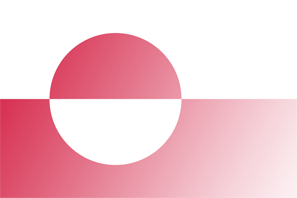

The ISIS Islamic State – Al Qaeda Invasion of Latin America with Indigenous Latino Hispanic Muslims through Central America like Mayan Mexican Muslims Southern Mexico and Guatemala
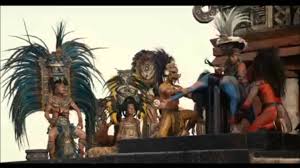





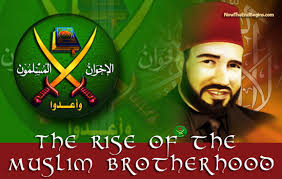

The ISIS Islamic State – Al Qaeda Invasion of Latin America with Indigenous Latino Hispanic Muslims through Central America like Mayan Mexican Muslims Southern Mexico and Guatemala


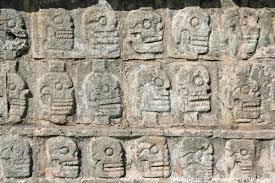

The ISIS Islamic State – Al Qaeda Invasion of Latin America with Indigenous Latino Hispanic Muslims through Central America like Mayan Mexican Muslims Southern Mexico and Guatemala









The ISIS Islamic State – Al Qaeda Invasion of Latin America with Indigenous Latino Hispanic Muslims through Central America like Mayan Mexican Muslims Southern Mexico and Guatemala






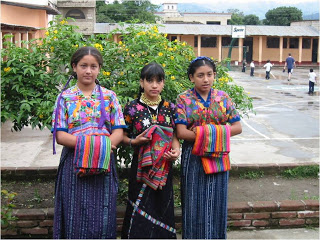
The ISIS Islamic State – Al Qaeda Invasion of Latin America with Indigenous Latino Hispanic Muslims through Central America like Mayan Mexican Muslims Southern Mexico and Guatemala




The ISIS Islamic State – Al Qaeda Invasion of Latin America with Indigenous Latino Hispanic Muslims through Central America like Mayan Mexican Muslims Southern Mexico and Guatemala




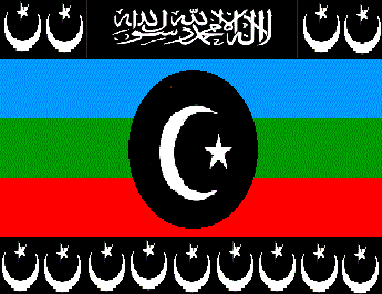
The ISIS Islamic State – Al Qaeda Invasion of Latin America with Indigenous Latino Hispanic Muslims through Central America like Mayan Mexican Muslims Southern Mexico and Guatemala

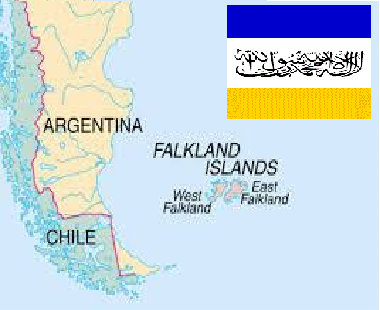
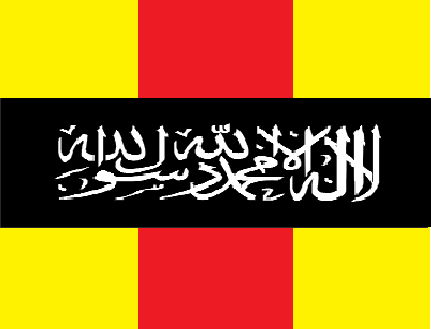
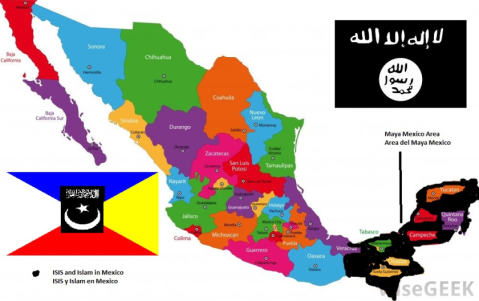


The ISIS Islamic State – Al Qaeda Invasion of Latin America with Indigenous Latino Hispanic Muslims through Central America like Mayan Mexican Muslims Southern Mexico and Guatemala




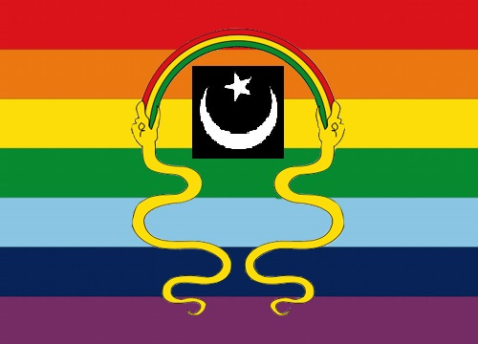

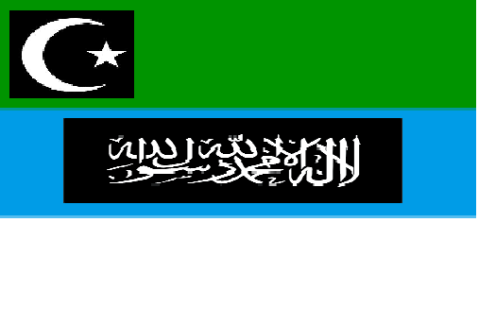
The ISIS Islamic State – Al Qaeda Invasion of Latin America with Indigenous Latino Hispanic Muslims through Central America like Mayan Mexican Muslims Southern Mexico and Guatemala

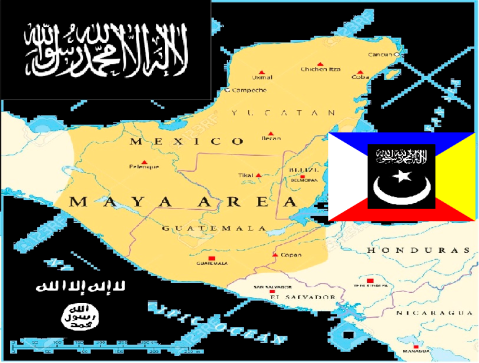
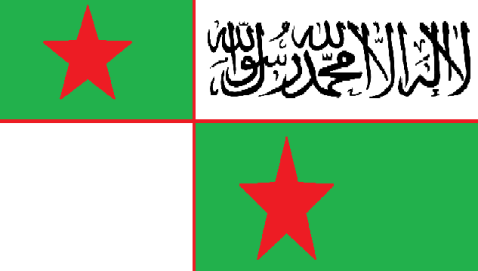

The ISIS Islamic State – Al Qaeda Invasion of Latin America with Indigenous Latino Hispanic Muslims through Central America like Mayan Mexican Muslims Southern Mexico and Guatemala




The ISIS Islamic State – Al Qaeda Invasion of Latin America with Indigenous Latino Hispanic Muslims through Central America like Mayan Mexican Muslims Southern Mexico and Guatemala
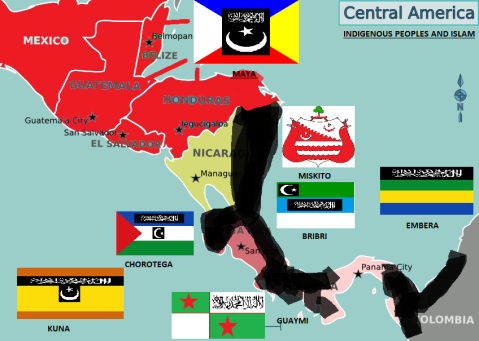



The ISIS Islamic State – Al Qaeda Invasion of Latin America with Indigenous Latino Hispanic Muslims through Central America like Mayan Mexican Muslims Southern Mexico and Guatemala

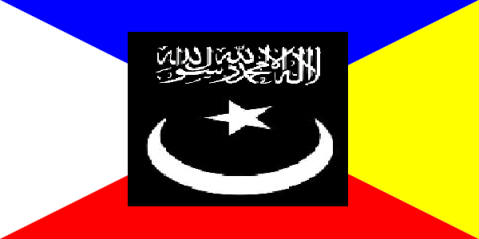




The ISIS Islamic State – Al Qaeda Invasion of Latin America with Indigenous Latino Hispanic Muslims through Central America like Mayan Mexican Muslims Southern Mexico and Guatemala





The ISIS Islamic State – Al Qaeda Invasion of Latin America with Indigenous Latino Hispanic Muslims through Central America like Mayan Mexican Muslims Southern Mexico and Guatemala











The ISIS Islamic State – Al Qaeda Invasion of Latin America with Indigenous Latino Hispanic Muslims through Central America like Mayan Mexican Muslims Southern Mexico and Guatemala






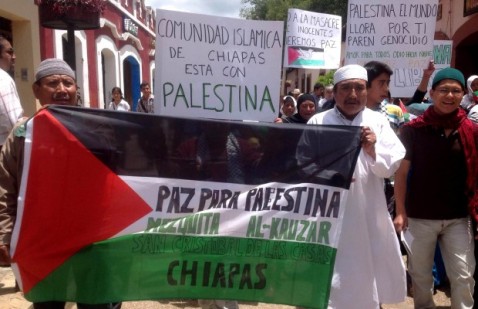
The ISIS Islamic State – Al Qaeda Invasion of Latin America with Indigenous Latino Hispanic Muslims through Central America like Mayan Mexican Muslims Southern Mexico and Guatemala
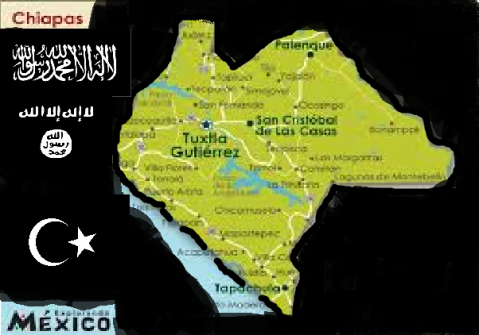

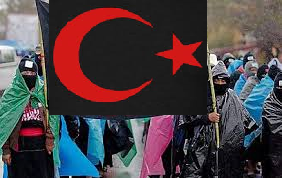



The ISIS Islamic State – Al Qaeda Invasion of Latin America with Indigenous Latino Hispanic Muslims through Central America like Mayan Mexican Muslims Southern Mexico and Guatemala

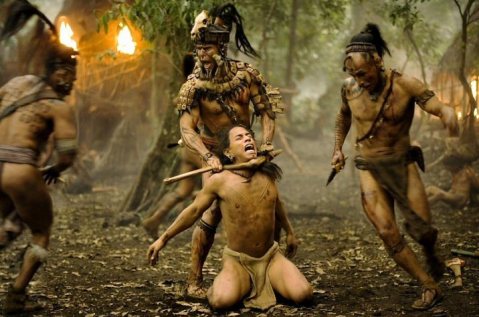
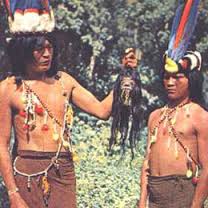


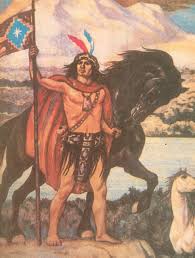

The ISIS Islamic State – Al Qaeda Invasion of Latin America with Indigenous Latino Hispanic Muslims through Central America like Mayan Mexican Muslims Southern Mexico and Guatemala




The ISIS Islamic State – Al Qaeda Invasion of Latin America with Indigenous Latino Hispanic Muslims through Central America like Mayan Mexican Muslims Southern Mexico and Guatemala



The ISIS Islamic State – Al Qaeda Invasion of Latin America with Indigenous Latino Hispanic Muslims through Central America like Mayan Mexican Muslims Southern Mexico and Guatemala
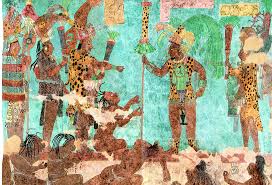
The ISIS Islamic State – Al Qaeda Invasion of Latin America with Indigenous Latino Hispanic Muslims through Central America like Mayan Mexican Muslims Southern Mexico and Guatemala
Jihadists are Scared and no Match to the Organized Crime Groups
Jihadists are Scared and no Match to the Organized Crime Groups
Jihadism (also jihadist movement or jihadi movement) refers to the renewed focus on armed jihad in Islamic fundamentalism since the later 20th century, but with a continuous history reaching back to the early 1800s (see Fula jihads).
“Jihadism” in this sense covers both Mujahideen guerilla warfare and Islamic terrorism with an international scope as it arose from the 1980s, since the 1990s substantially represented by the al-Qaeda network. It has its roots in the late 19th and early 20th century ideological developments of Islamic revivalism, developed into Qutbism and related ideologies during the mid 20th century. The rise of jihadism was re-enforced by the Soviet invasion of Afghanistan in 1979, and has been propagated in various armed conflicts throughout the 1990s and 2000s. A specifically Salafist jihadism has been diagnosed within the modern Salafi movement by Gilles Kepel in the mid-1990s.
Jihadism with an international, Pan-Islamist scope in this sense is also known as Global Jihadism. Generally the term jihadism denotes Sunni Islamist armed struggle. Sectarian tensions led to numerous forms of (Salafist and other Islamist) jihadism against Shia, Sufi and Ahmadi mosques.
*************
Organized crime, Organised crime, and often criminal organizations are a group of terms which categorise transnational, national, or local groupings of highly centralized enterprises run by criminals, who intend to engage in illegal activity, most commonly for monetary profit. Some criminal organizations, such as terrorist organizations, are politically motivated. Sometimes criminal organizations force people to do business with them, as when a gang extorts money from shopkeepers for so-called “protection”.[1] Gangs may become disciplined enough to be considered organized. An organized gang or criminal set can also be referred to as a mob.[2]
Other organizations like, States, the Army, Police, Governments and Corporations may sometimes use organized crime methods to conduct their business, but their powers derive from their status as formal social institutions. There is a tendency to distinguish organized crime from other forms of crimes, such as, white-collar crime, financial crimes, political crimes, war crime, state crimes and treason. This distinction is not always apparent and the academic debate is ongoing.[3] For example, in failed states that can no longer perform basic functions such as education, security, or governance, usually due to fractious violence or extreme poverty, organised crime, governance and war are often complimentary to each other. The term Parliamentary Mafiocracy is often attributed to democratic countries whose political, social and economic institutions are under the control of few families and business oligarchs.[4]
In the United States, the Organized Crime Control Act (1970) defines organized crime as “The unlawful activities of […] a highly organized, disciplined association […]”.[5] Criminal activity as a structured group is referred to as racketeering and such crime is commonly referred to as the work of the Mob. In the UK, police estimate organized crime involves up to 38,000 people operating in 6,000 various groups.[6] In addition, due to the escalating violence of Mexico’s drug war, the Mexican drug cartels are considered the “greatest organized crime threat to the United States” according to a report issued by the United States Department of Justice.[7]
Jihadists are Scared and no Match to the Far Right Wing Groups
Jihadists are Scared and no Match to the Far Right Wing Groups
Jihadism (also jihadist movement or jihadi movement) refers to the renewed focus on armed jihad in Islamic fundamentalism since the later 20th century, but with a continuous history reaching back to the early 1800s (see Fula jihads).
“Jihadism” in this sense covers both Mujahideen guerilla warfare and Islamic terrorism with an international scope as it arose from the 1980s, since the 1990s substantially represented by the al-Qaeda network. It has its roots in the late 19th and early 20th century ideological developments of Islamic revivalism, developed into Qutbism and related ideologies during the mid 20th century. The rise of jihadism was re-enforced by the Soviet invasion of Afghanistan in 1979, and has been propagated in various armed conflicts throughout the 1990s and 2000s. A specifically Salafist jihadism has been diagnosed within the modern Salafi movement by Gilles Kepel in the mid-1990s.
Jihadism with an international, Pan-Islamist scope in this sense is also known as Global Jihadism. Generally the term jihadism denotes Sunni Islamist armed struggle. Sectarian tensions led to numerous forms of (Salafist and other Islamist) jihadism against Shia, Sufi and Ahmadi mosques.
**************
By country
European national parliaments with representatives from right-wing populist parties in 2013. In dark blue, those in government.
Piero Ignazi divided right-wing populist parties, which he called extreme right parties, into two categories: traditional right-wing parties that had developed out of the historic right and post-industrial parties that had developed independently. He placed the former Italian Social Movement, the Italian Tricolour Flame and Lega Nord the National Democratic Party of Germany, the German People’s Union, the former Dutch Centre Party, the British National Party, and the Belgian Vlaams Blok in the first category. He placed the French National Front, the German Republicans, the Dutch Centre Democrats, the Belgian Front national, the Freedom Party of Austria, the Danish Progress Party, the Norwegian Progress Party, and the Swedish New Democracy in the second category.[9]
Right-wing populist parties in the English-speaking world include the UK Independence Party,[10] the former Reform Party of Canada,[11] Australia’s One Nation,[12] and New Zealand First.[13]
Austria
The Austrian Freedom Party (FPÖ) established in 1955 traditionally represents the “Third Camp” (Drittes Lager), beside the Socialist Party and the social Catholic Austrian People’s Party. It succeeded the Federation of Independents founded after World War II, adopting the pre-war heritage of German nationalism. Though it did not gain much popularity for decades, it exercised considerable balance of power by supporting several federal governments, be it right-wing or left-wing, e.g. the Socialist Kreisky cabinet of 1970 (see Kreisky–Peter–Wiesenthal affair).
Haider in September 2008
From 1980, the Freedom Party adopted a more liberal stance. Upon the 1983 federal election it entered a coalition government with the Socialist Party, whereby party chairman Norbert Steger served as Vice-Chancellor. The liberal interlude however ended, when Jörg Haider was elected chairman in 1986. By his down-to-earth manners and patriotic attitude, Haider re-integrated the party’s nationalist base voters. Nevertheless, he was also able to obtain votes from large sections of population disenchanted with politics by publicly denouncing corruption and nepotism of the Austrian Proporz system. The electoral success was boosted by Austria’s accession to the EU in 1995.
Upon the 1999 federal election the Freedom Party with 26.9% of the votes cast became the second strongest party in the National Council parliament. Having entered a coalition government with the People’s Party, Haider had to face the disability of several FPÖ ministers, but also the impossibility to agitate against the own cabinet. In 2005 he finally countered the Freedom Party’s loss of reputation by the Alliance for the Future of Austria (BZÖ) relaunch in order to carry on the government. The remaining FPÖ members elected Heinz-Christian Strache chairman; since the 2006 federal election both right-wing parties have run separately. After Haider was killed in a car accident in 2008, the BZÖ has lost a measurable amount of support.
Belgium
Flag used by the now-defunct Vlaams Blok, representing the flag of Flanders (top), and historical flag of the Netherlands (bottom).
Vlaams Blok, established in 1978, operated on a platform of law and order, anti-immigration (with particular focus on Islamic immigration), and secession of the Flanders region of the country. The secession was originally planned to end in the annexation of Flanders by the culturally and linguistically similar Netherlands until the plan was abandoned due to the multiculturalism in that country. In the elections to the Flemish Parliament in June 2004, the party received 24.15% of the vote, within less than 2% of being the largest party.[14] However, in November of the same year, the party was ruled illegal under anti-racism law for, among other things, advocating schools segregated between citizens and immigrants.[15]
In less than a week, the party was re-established under the name Vlaams Belang, with a near-identical ideology. It advocates for immigrants wishing to stay to adopt the Flemish culture and language.[16] Despite some accusations of anti-Semitism from Belgium’s Jewish population, the party has demonstrated a staunch pro-Israel stance as part of its opposition to Islam.[17] With 18 of 124 seats, Vlaams Belang lead the opposition in the Flemish Parliament,[18] and also have 11 of the 150 seats in the Belgian House of Representatives.[19]
Britian
The British National Party (BNP) is a far-right political party in the United Kingdom. Formed as a splinter group from the National Front by John Tyndall in 1982, since 1999 it has been led by Nick Griffin. The BNP party platform is centred on the advocacy of “voluntary resettlement whereby immigrants and their descendants are afforded the opportunity to return to their lands of ethnic origin.”[15] As well as anti-immigration rhetoric, the party advocates the reintroduction of capital punishment, and opposes same-sex marriage, and what it perceives as the Islamification of the UK.
The party’s ideology has been described as fascist by political scientists and commentators,[4] but the party formally denies this label. High-profile groups and people including The Royal British Legion and David Cameron have criticised the BNP, and BNP membership is prohibited for people of certain occupations. It restricted membership to “indigenous British” people until a 2010 legal challenge to its constitution.[16]
The BNP finished fifth in the 2008 London mayoral election with 5.3% of the vote, winning a seat in the London Assembly. In 2009 it won its first county council seats and two seats in the European Parliament, with leader Nick Griffin and Andrew Brons being elected as Members of the European Parliament (MEP) in the North West and Yorkshire and Humber regions. Brons resigned from the BNP in 2011. During the 2010 General Election, the BNP received 1.9% of the vote and failed to win any seats. According to the BNP’s statement of accounts in December 2012, its membership was 4872, compared to over 12,000 in 2009. A number of breakaway parties have been formed from former BNP members.
Bulgaria
Attack (Bulgarian: Атака) is a Bulgarian nationalist party, founded by the ultranationalist[6][7] Volen Siderov in 2005. Different opinions define the party with each position, according to some opinions the party is extreme right,[3][8] according to others extreme left, left-wing and right-wing,[4][5] while the management of the party declares that their party is neither left, nor right, but Bulgarian.[9] It advocates the re-nationalisation of privatized companies and seeks to prioritize spending on education, healthcare and welfare.[3] The party is considered ultranationalist[6][10][11] and racist, especially antisemitic and anti-Roma,[12] as well as xenophobic,[1][6][9][10] especially anti-Muslim[12] and anti-Turkish.[12] The party opposes the Bulgarian membership in NATO[1] and requires revision for what it calls the ‘double standards’ for the membership in the European Union, while members visit international Orthodox and anti-globalization congresses and the party is closely tied with the Bulgarian Orthodox Church.[10]
In the Bulgarian parliamentary elections of 2005, 2009, and 2013 Attack was consistently the fourth-strongest party and won 21 respectively 23 of the 240 seats. In the presidential election 2006, Siderov was placed second and qualified for the run-off, in 2011 he played only a minor role and was placed fourth. In the last election for the European Parliament, Attack won two of the 18 Bulgarian seats.
Cyprus
The ELAM (National People’s Front) (Εθνικό Λαϊκό Μέτωπο) was formed in 2008 on the platform of maintaining Cypriot identity, opposition to further European integration, immigration, and the status quo that remains due to Turkey’s invasion of a third of the island (and the international community’s lack of intention to solve the issue).
Denmark
In the early 1970s, the home of the strongest right wing-populist party in Europe was in Denmark, the Progress Party.[20] In the 1973 election it received almost 16% of the vote.[21] In the years following its support dwindled away, but was replaced by the Danish People’s Party in the 1990s, which has gone on to be an important support party for the governing Liberal-Conservative coalition in the 2000s (decade).[22]
France
The National Front (Front national (French pronunciation: [fʁɔ̃ na.sjɔ.nal]) or FN) is an economically protectionist, socially conservative nationalist party in France. The party was founded in 1972, seeking to unify a variety of French nationalist movements of the time. In 1973 the party created its own youth movement, the FNJ, Front national de la jeunesse. Jean-Marie Le Pen was the party’s first leader and the undisputed centre of the party from its start until his resignation in 2011. While the party struggled as a marginal force for its first ten years, since 1984 it has been the unrivalled major force of French right-wing nationalism.[2] The FN has established itself as the third largest political force in France, after the Union for a Popular Movement (UMP) and the Socialist Party (PS).[3][4] The 2002 presidential election was the first ever in France to include a right-wing nationalist candidate in the run-off, after Le Pen beat the Socialist candidate in the first round. In the run-off, Le Pen nevertheless finished a distant second to Jacques Chirac. Due to the French electoral system, the party’s representation in public office has been limited, despite its significant share of the vote.[5] The current leader of the party is Marine Le Pen, who took over from her father in 2011.
Its major current policies include economic protectionism, a zero tolerance approach to law and order issues, and anti-immigration. Since the 1990s, its stance on the European Union has grown increasingly eurosceptic. The party’s opposition to immigration is particularly focused on non-European immigration, and includes support for deporting illegal, criminal, and unemployed immigrants; its policy is nevertheless more moderate today than it was at its most radical point in the 1990s.
Germany
Franz Schönhuber on a Republikaner 1989 European election poster
So far, all attempts by right-wing populist parties to enter the national Bundestag parliament have failed. Instead, populist positions are successfully represented by the left-wing The Left party. All right-wing populist parties have to face the problem of differentiation regarding far-right politics discredited by Nazism.
Nevertheless, on a regional level, right-wing populist movements like Pro NRW and Citizens in Rage (Bürger in Wut, BIW) sporadically attract some support. In 1989 the Republicans (Die Republikaner) led by Franz Schönhuber entered the Abgeordnetenhaus of Berlin and achieved more than 7% of the German votes cast in the 1989 European election, with six seats in the European Parliament. The party also won seats in the Landtag of Baden-Württemberg twice in 1992 and 1996; after 2000 however, the Republicans’ support eroded in favour of the far-right German People’s Union and the National Democratic Party of Germany (NPD), which in the 2009 federal election held 1.5% of the popular vote (winning up to 9% in regional Landtag parliamentary elections).
In 2005, a nation-wide Pro Germany Citizens’ Movement (pro Deutschland) was founded in Cologne. The pro movement appears as a conglomerate of numerous small parties, voters’ associations and societies, distinguishing themselves by campaigns against Islamic extremism[23] and Muslim immigrants. Its representatives claim a zero tolerance policy and the combat of corruption. With the denial of a multiethnic society (Überfremdung) and the evocation of an alleged islamization, the pro politics extend to far-right positions. Other minor right-wing populist parties include the German Freedom Party founded in 2010, the former East German German Social Union (DSU), the dissolved Law and Order Offensive Party (Schill Party), and temporarily the Statt Party.
Greece
The neo-Nazi Golden Dawn has grown significantly in Greece during the country’s economic downturn, gaining 7% of the vote and 18 out of 300 seats in the Hellenic Parliament. The party’s ideology includes annexation of territory in Albania and Turkey, including the Turkish cities of Istanbul and Izmir.[24] Controversial measures by the party included a poor people’s kitchen in Athens which only supplied for Greek citizens and was shut down by the police.[25]
The Popular Orthodox Rally is not represented in the Greek legislature, but supplies 2 of the country’s 22 MEPS. It supports anti-globalisation and lower taxes for small businesses, as well as opposition to Turkish accession to the European Union and the Republic of Macedonia’s use of the name Macedonia, as well as immigration only for Europeans.[26]
Italy
Roberto Maroni leader of the Lega Nord since 2012.
In Italy, right-wing populism is represented mainly by the Lega Nord,[27] a federalist and regionalist political party in Italy founded in 1991 as a federation of several regional parties of Northern and Central Italy, most of which had arisen and expanded their share of the electorate over the 1980s.
The party came to power in alliance with Silvio Berlusconi in 1994. This time the Lega Nord gained the 8.4% of votes. In 2000 the party re-joined forces with Berlusconi’s coalition, previous disagreements notwithstanding. In 2001–2006 the Lega Nord, although being severely reduced in its parliamentary representation, controlled three key ministries: Justice, Labour & Social Affairs, and Institutional Reforms and Devolution. In 2008 the Lega Nord ran in the elections in coalition with the The People of Freedom (Berlusconi’s party) and the Movement for Autonomy, gaining 8.3% of the vote and obtaining 60 deputies and 26 senators. In 2013 general election, the Lega Nord gained 4.1% of votes, supporting the Centre-right Coalition led by Berlusconi, and it obtained 18 deputies and 18 senators.
The Lega Nord’s political program advocates the transformation of Italy into a federal state, fiscal federalism and greater regional autonomy, especially for the Northern regions. At times it has advocated the secession of the North, which it calls Padania. The Lega Nord also fights for the implementation of stricter rules and laws in order to contrast the expansion of Islam into Europe. It is opposed to Turkish membership of the European Union and is considered one of the eurosceptic movements. It also emphasizes the fight against illegal immigration.
Following the 2009 European election the Lega Nord joined the newly formed Europe of Freedom and Democracy (EFD) group, with other European Right-wing political parties.
Another Italian right-wing populist party is the neo-fascist The Right (La Destra), led by Francesco Storace. It was founded in 2007 and in the general election on the following year The Right gained 2.4% of votes but it did not succeeded in taking some seats in the Parliament. In the 2013 general election, The Right had been an ally of Berlusconi’s Centre-right Coalition, gaining 0.7% of votes and no seats.
Hungary
Jobbik, The Movement for a Better Hungary (Hungarian: Jobbik Magyarországért Mozgalom), commonly known as Jobbik (pronounced [ˈjobːik]), is a Hungarian radical nationalist[3][4] political party. The party describes itself as “a principled, conservative and radically patriotic Christian party”, whose “fundamental purpose” was the protection of “Hungarian values and interests.”[8] Jobbik has been described by scholars, different press outlets and its political opponents as fascist,[9] neo-fascist,[10] Neo-Nazi,[11] extremist,[12] racist,[13] anti-Semitic,[14][15] anti-Roma[16] and homophobic.[17] Measured according to its representation in the European Parliament and the National Assembly, it is Hungary’s third largest party.
Netherlands
Pim Fortuyn, Dutch politician who was assassinated in 2002 during an election campaign.
In the Netherlands, right-wing populism won a minor representation in the 150-seat House of Representatives in 1982, when the Centre Party won a single seat. During the 1990s, a splinter party, the Centre Democrats, was slightly more successful, although its significance was still marginal. Not before 2002 did a party considered right-wing populist break through in the Netherlands, when the Pim Fortuyn List won 26 seats and subsequently formed a coalition with the VVD and CDA. Fortuyn, who had strong views against immigration, particularly from Muslims, was assassinated in May 2002, two weeks before the election.[28] The coalition broke up already in 2003, and the party went into steep decline until it was dissolved.
Since 2006, the Party for Freedom (PVV) has been represented in the House of Representatives. Following the 2010 general election, it has been in a pact with the right-wing minority government of VVD and CDA after it won 24 seats in the House of Representatives. The party is Eurosceptic and plays a leading role in the changing stance of the Dutch government towards European integration, as they came second in the 2009 European Parliament election, winning 4 out of 25 seats. The party’s main programme revolves around strong criticism of Islam, but broadened to all other fields as the party grew to its semi-governmental state. The PVV withdrew its support for the Rutte Cabinet in 2012 after refusing to support austerity measures. This triggered the 2012 general election in which the PVV was reduced to 15 seats and excluded from the new government.
Norway
The Norwegian Progress Party (FrP) is commonly considered a right-wing populist party.[29][30] From 2001 to 2005, the party tolerated Kjell Magne Bondevik’s centre-right minority government. In the 1997, 2005, and 2009 parliamentary elections, the FrP was the second-largest Norwegian party by votes.
Poland
The Congress of the New Right, led by Janusz Korwin-Mikke, is the largest right-wing populist party in Poland, but has no representation in national or European legislature. Its policies are mainly centred on lower taxes rather than the immigration issues highlighted by other right-wing populist parties in Europe.
Switzerland
In Switzerland, the right-wing populist Swiss People’s Party reached an all-time high in the 2007 elections. The party has variously been identified as “extreme right”[31] and “radical right-wing populist”,[32] reflecting a spectrum of ideologies present among its members. In its far right wing, it includes extremist members such as Ulrich Schlüer, Pascal Junod, who heads a ‘New Right’ study group and has been linked to Holocaust denial and neo-Nazism.[33][34] In Switzerland, radical right populist parties held close to 10% of the popular vote in 1971, were reduced to below 2% by 1979, and again grew to more than 10% in 1991. Since 1991, these parties (the Swiss Democrats and the Swiss Freedom Party) have been absorbed by the Swiss People’s Party, whose aggressively right-wing, populist campaign catapulted it to 29% of the popular vote in 2007, the highest vote ever recorded for a single party throughout Swiss parliamentary history.
United Kingdom
Nigel Farage, leader of and MEP for the right-wing populist UK Independence Party.
Sweden
The National Democrats (Nationaldemokraterna, ND) is a minor political party in Sweden, formed by a faction of the Sweden Democrats in October 2001. The party describes itself as a democratic nationalist and ethnopluralist party.[5]
In the 2002 general election the party received 9,248 votes,[6] far below the 4 percent threshold necessary for parliamentary representation. In the 2006 general election the party received 3,064 votes (0.06%), however they currently have representation in two municipalities south of Stockholm.[7][8] In the 2010 general election the party received 1,141 votes (0.02%).[9] The current chairman of the party is Marc Abramsson.
On 2 February 2008, the old party logo consisting of a blue and yellow sail was replaced with an orange cloudberry flower
United Kingdom
The largest right-wing populist party in the United Kingdom is the UK Independence Party (UKIP). Advocating an exit from the European Union and a five-year moratorium on immigration, UKIP, who do not have representation in Britain’s House of Commons, are Britain’s third most popular party, with 14% of the popular support.[35] Britain’s governing Conservative Party has seen defections to UKIP over European Union and immigration debate, as well as the Conservative’s positive stance on same-sex marriage. [36]
The white nationalist British National Party, with one representative in the European Parliament, and the anti-Islamist street protest group English Defence League are also right-wing populist.
United States
Moore (1996) argues that “populist opposition to the growing power of political, economic, and cultural elites” helped shape “conservative and right-wing movements” since the 1920s.[37] The Tea Party movement of 2009–present had been characterized as “a right-wing anti-systemic populist movement” by Rasmussen and Schoen (2010). They add, “Today our country is in the midst of a…new populist revolt that has emerged overwhelmingly from the right — manifesting itself as the Tea Party movement.”[38] The New York Times reports, “The Tea Party movement has become a platform for conservative populist discontent”.[39]
Jihadists are Scared and no Match to the Neo Nazi Groups
Jihadists are Scared and no Match to the Neo Nazi Groups
Jihadism (also jihadist movement or jihadi movement) refers to the renewed focus on armed jihad in Islamic fundamentalism since the later 20th century, but with a continuous history reaching back to the early 1800s (see Fula jihads).
“Jihadism” in this sense covers both Mujahideen guerilla warfare and Islamic terrorism with an international scope as it arose from the 1980s, since the 1990s substantially represented by the al-Qaeda network. It has its roots in the late 19th and early 20th century ideological developments of Islamic revivalism, developed into Qutbism and related ideologies during the mid 20th century. The rise of jihadism was re-enforced by the Soviet invasion of Afghanistan in 1979, and has been propagated in various armed conflicts throughout the 1990s and 2000s. A specifically Salafist jihadism has been diagnosed within the modern Salafi movement by Gilles Kepel in the mid-1990s.
Jihadism with an international, Pan-Islamist scope in this sense is also known as Global Jihadism. Generally the term jihadism denotes Sunni Islamist armed struggle. Sectarian tensions led to numerous forms of (Salafist and other Islamist) jihadism against Shia, Sufi and Ahmadi mosques.
*******************
Neo Nazi Groups
Europe
Neo-Nazi march in Munich, Germany, 2005
Austria
Far right parties are among the strongest political parties in Austria.[7] The success of the far right in Austria has not been the result of economic crisis or social conflict, but primarily of political factors, including the failure of denazification after World War II.[8][9]
The major postwar far right party was the Austrian National Democratic Party (NDP), until it was banned in 1988 for violating Austria’s anti-Nazi legislation, Verbotsgesetz 1947.[10] The Freedom Party of Austria (FPÖ) served as a shelter for ex-Nazis almost from its inception. In 1980, scandals undermined Austria’s two main parties, and the economy stagnated. Jörg Haider became leader of the FPÖ and offered partial justification for Nazism, calling its employment policy effective. In 1994, the FPÖ won 33 percent of the vote in Carinthia and 22 percent in Vienna, showing that it had become a force capable of reversing the old pattern of Austrian politics. In the 1994 Austrian election, the FPÖ won 22 percent of the vote.[11]
Historian Walter Laqueur writes that even though Haider welcomed former Nazis at his meetings and went out of his way to address Schutzstaffel (SS) veterans, the FPÖ is not a fascist party in the traditional sense, since it has not made anti-communism an important issue, and does not advocate the overthrow of the democratic order or the use of violence. In his view, the FPÖ is “not quite fascist”, although it is part of a tradition, similar to that of 19th century Viennese mayor Karl Lueger, that involves nationalism, xenophobic populism, and authoritarianism.[12] Professor Ali Mazrui, however, identified the FPÖ as neo-Nazi in a BBC world lecture.[13]
Haider, who in 2005 left the Freedom Party and formed the Alliance for Austria’s Future, was killed in a traffic accident in October, 2008.[14]
Barbara Rosenkranz, the Freedom Party’s candidate for the Austrian presidential election, 2010, is controversial for having made allegedly pro-Nazi statements.[15] Rosenkranz is married to Horst Rosenkranz, a key member of a banned neo-Nazi party, and known for publishing far-right books. Rosenkranz says she cannot detect anything “dishonourable” in her husband’s activities.[16]
The volume Rechtsextremismus in Österreich seit 1945 (Right-wing Extremism in Austria since 1945), issued by DÖW in 1979, listed nearly 50 active far right organizations in Austria. Their influence waned gradually, partly due to liberalization programs in secondary schools and universities that emphasized Austrian identity and democratic traditions. Votes for the RFS (Ring Freiheitlicher Studenten), the Freedom Party’s academic student organization, in student elections fell from 30% in the 1960s to 2% in 1987. In the 1995 elections for the student representative body Österreichische Hochschülerschaft (Austrian Students’ Association), the RFS got 4% of the vote. The FPÖ won 22% of the votes at the General Election in the same year.[17]
A radical non-parliamentary, anti-democratic far-right organization active in Austria was the VAPO (Volkstreue Außerparlamentarische Opposition) founded by the Austrian neo-Nazi Gottfried Küssel in 1986, who publicly declared to be a member of the US-American neo-Nazi organization NSDAP/AO since 1977. Neither an association nor a party, the VAPO was loosely organized in “Kameradschaften” (comradeships) and defined itself as a “battle alliance of nationalist groups and persons” with the aims of “reestablishing the NSDAP” and the “seizure of power”.[18] In 1993 Küssel was repeatedly convicted on charges of “NS-Wiederbetätigung” (re-engagement in national socialism) under the Austrian anti-Nazi law (Verbotsgesetz 1947) and sentenced to ten years of prison.[19] The VAPO de facto disbanded in the course of the imprisonment of its leading figures, much due to its loose organizational structure. Due to procedural errors Küssel’s sentence was revoked by the OGH (Austrian High Court) and the trial reheld in 1994 where Küssel was sentenced to eleven years in prison.[20]
Belgium
Main article: Bloed, Bodem, Eer en Trouw
A Belgian neo-Nazi organization, Bloed, Bodem, Eer en Trouw (Blood, Soil, Honour and Loyalty), was created in 2004 after splitting from the international network (Blood and Honour). The group rose to public prominence in September 2006, after 17 members (including 11 soldiers) were arrested under the December 2003 anti-terrorist laws and laws against racism, antisemitism and supporters of censorship. According to Justice Minister Laurette Onkelinx and Interior Minister Patrick Dewael, the suspects (11 of whom were members of the military) were preparing terrorist attacks in order to “destabilize” Belgium.[21][22] According to journalist Manuel Abramowicz, of the Resistances network, the ultras of the radical right have always had as its aim to “infiltrate the state mechanisms,” including the army in the 1970s and the 1980s, through Westland New Post and the Front de la Jeunesse.[23]
A police operation, which mobilized 150 agents, searched five military barracks (in Leopoldsburg near the Dutch border: Kleine-Brogel, Peer, Brussels (Royal military school) and Zedelgem– as well as 18 private addresses in Flanders. They found weapons, munitions, explosives, and a homemade bomb large enough to make “a car explode.” The leading suspect, B.T., was organizing the trafficking of weapons, and was developing international links, in particular with the Dutch far right movement De Nationale Alliantie.[24][25][26][27][28][29]
Two further incidents of neo-nazism in Belgium include: Demonstrators at an anti-Israel rally in Antwerp, on November 18, 2012 chanted “Hamas, Hamas, all Jews to the gas.”, Murdering Jews by gas was the most common of murder methods by the Nazis, after 1941. On October 9, 2012 in Brussels, A synagogue was vandalized by two unidentified male perpetrators who spray-painted “death to the Jews” and “boom” on the wall of the Beth Hillel synagogue.
Bosnia and Herzegovina
The neo-Nazi white nationalist organization Bosanski Pokret Nacionalnog Ponosa (Bosnian Movement of National Pride) was founded in Bosnia and Herzegovina in July 2009. Their model is the Waffen-SS Handschar Division, composed of Bosnian Muslim volunteers.[30] They proclaimed their main enemies to be “Jews, Gypsies, Serbian Chetniks, the Croatian separatists, Josip Broz Tito, Communists, homosexuals and blacks”.[31][32] They mix an ideology of Bosnian nationalism, National Socialism and white nationalism. The group is led by a person nicknamed Sauberzwig, after the commander of the 13 SS Handschar. The group’s strongest area of operations is in the Tuzla area of Bosnia.
Croatia
See also: Far right in Croatia
Neo-Nazis in Croatia base their ideology on the writings of Ante Pavelić and the Ustaše, a fascist anti-Yugoslav separatist movement.[33][34][35] The Ustaše regime committed a genocide against Serbs, Jews and Gypsies. At the end of World War II, many Ustaše members fled to the West, where they found sanctuary and continued their political and terrorist activities (which were tolerated because of Cold War hostilities).[36][37] Jonathan Levy, a lawyer who represented plaintiffs in a 1999 lawsuit against the Ustaše and others, said: “Many are still terrified of the Ustashe, the Serbs particularly. Unlike the Nazi Party, the Ustashe still exist and have a party headquarters in Zagreb.”[38]
In 1999, Zagreb’s Square of the Victims of Fascism was renamed The Square of The Great Men of Croatia, provoking widespread criticism of Croatia’s attitude toward the Holocaust.[39] In 2000, city council renamed the square to Square of the Victims of Fascism again.[40] Many streets in Croatia were renamed after the prominent Ustaše figure Mile Budak, which provoked outrage amongst the Serbian minority. Since 2002, there has been a reversal of this development, and streets with the name of Mile Budak or other persons connected with the Ustaše movement are few or non-existent.[41] A plaque in Slunj with the inscription “Croatian Knight Jure Francetić” was erected to commemorate Francetić, the notorious Ustaše leader of the Black Legion. The plaque remained there for four years, until it was removed by the authorities.[41][42]
In 2003, an attempt was made to amend the Croatian penal code by adding articles prohibiting the public display of Nazi symbols, the propagation of Nazi ideology, historical revisionism and holocaust denial, but this attempt was prevented by the Croatian constitutional court.[43] An amendment was added in 2006 to prohibit any type of hate crime based on factors such as race, color, gender, sexual orientation, religion or national origin.[44]
There have been instances of hate speech in Croatia, such as the use of the phrase Srbe na vrbe! (“(hang) Serbs on the willow trees!”). In 2004, an Orthodox church was spray-painted with pro-Ustaše graffiti.[45][46] During some protests in Croatia, supporters of Ante Gotovina and other suspected war criminals have carried nationalist symbols and pictures of Pavelić.[47] On May 17, 2007, a concert in Zagreb by Thompson, a popular Croatian singer, was attended by 60,000 people, some of them wearing Ustaše uniforms. Some gave Ustaše salutes and shouted the Ustaše slogan “Za dom spremni” (for the homeland – ready!). This event prompted the Jerusalem office of the Simon Wiesenthal Center to publicly issue a protest to the Croatian president.[48][49][50][51][52] In 2007, Austrian authorities launched a criminal investigation into the widespread display of Ustaše symbols at a gathering of Croatian nationalists in Bleiburg, Austria.[53][54]
Estonia
In 2006, Roman Ilin, a Jewish theatre director from St. Petersburg, Russia, was attacked by neo-Nazis when returning from an underground tunnel after a rehearsal. Ilin subsequently accused Estonian police of indifference after filing the incident.[55][dead link] When a dark-skinned French student was attacked in Tartu, the head of an association of foreign students claimed that the attack was characteristic of a wave of neo-Nazi violence. An Estonian police official, however, stated that there were only a few cases involving foreign students over the previous two years.[56][dead link] In November 2006, the Estonian government passed a law banning the display of Nazi symbols.[57]
The 2008 United Nations Human Rights Council Special Rapporteur’s Report noted that community representatives and non-governmental organizations devoted to human rights had pointed out that neo-Nazi groups were active in Estonia — particularly in Tartu — and had perpetrated acts of violence against non-European minorities.[58][dead link]
Hungary
Further information: History of the Jews in Hungary
Today, Neo-Nazism in Hungary takes the form of hatred towards Judaism and Israel, it can be observed from many prominent Hungarian politicians. The most famous example is the MIÉP-Jobbik Third Way Alliance of Parties. Antisemitism in Hungary is manifested mainly in far right publications and demonstrations. Hungarian Justice and Life Party supporters continued their tradition of shouting antisemitic slogans and tearing the US flag to shreds at their annual rallies in Budapest in March 2003 and 2004, commemorating the 1848–49 revolution. Further, during the demonstrations held to celebrate the anniversary of the 1956 uprising, a post-Communist tradition celebrated by the left and right of the political spectrum, antisemitic and anti-Israel slogans were heard from the right wing, such as accusing Israel of war crimes. The center-right traditionally keeps its distance from the right-wing Csurka-led and other far-right demonstrations.[59] On February 2–3, 2008 Two teenagers, ages 15 and 16, spray-painted swastikas and anti-Semitic slogans on 24 graves in a local Jewish cemetery. The boys also admitted to defacing a Holocaust memorial and a store owned by Chinese immigrants. On January 23, 2011 Three teenagers toppled 75 tombstones in a Jewish cemetery and admitted to police that they were “showing off” for one another. Prime Minister Orbán’s spokesman condemned the incident, saying, “vandalism triggered by anti-Semitism” is “offensive to the Hungarian Jewish community and to all Hungarians.” He added that “the government condemns vandalism and will punish such acts.” At March 25, 2012 another Jewish cemetery was desecrated when vandals toppled 57 tombstones in the Kaposvar’s Jewish cemetery. At July 22, 2012 The main Holocaust memorial was vandalized with Stars of David and graffiti that said, “This is not your country, dirty Jews” and “You are going to be shot there” next to an arrow pointing to the nearby Danube river, in the same place at December 1944 and January 1945, the Nazi-allied Hungarian Arrow Cross shot about 20,000 Jews on the banks of the Danube and threw them into the river. Just days prior to this incident, a statue of Raoul Wallenberg was vandalized with pigs feet. On June 9, 2012 A large menorah outside the Jewish community’s Holocaust memorial was vandalized in Nagykanizsa. In the same city another Holocaust memorial was vandalized later on that year on November 19, 2012. On October 25, 2012 Supporters of the ultranationalist Jobbik political party burned an Israeli flag in front of the city’s main Synagogue. At November 26, 2012, In a parliamentary session to discuss the conflict in Gaza, ultranationalist Jobbik party member Márton Gyöngyösi suggested that members of the Hungarian Parliament who are Jewish or of Jewish origin be counted and registered, “in order to avoid the national security risk caused by the Jews.”, not unlike the lists of Jews used during the Holocaust.
France
Main article: History of far-right movements in France
Neo-Nazi organizations in France are outlawed, yet a significant number exist.[60] Legal far-right groups are also numerous, and include the Bloc identitaire, created by former members of Christian Bouchet’s Unité Radicale group. Close to National Bolshevism and Third Position ideologies, Unité Radicale was dissolved in 2002 following Maxime Brunerie’s assassination attempt on July 14, 2002 against then-President Jacques Chirac. Christian Bouchet had previously been a member of Nouvelle Résistance (NR), an offshoot of Troisième Voie (Third Way) which described itself as “nationalist revolutionary”. Although Nouvelle Résistance at first opposed the “national conservatives” of Jean-Marie Le Pen’s National Front, it changed strategy, adopting the slogan “Less Leftism! More Fascism![61] ” Nouvelle Résistance was also a successor to Jean-François Thiriart’s Jeune Europe neo-Nazi Europeanist movement of the 1960s, which had participated in the National Party of Europe, along with Oswald Mosley’s Union Movement, Otto Strasser and others. The French government estimated that neo-Nazi groups in France had 3,500 members.[62] In 2011 alone, 129 violent actions were recorded in France against Jewish pupulation., with 60.5% of those those cases occurred in the Île-de-France region. The CNCDH notes that in 19 cases, these violent actions could be imputed to persons of ‘Arab origin or Muslim confession’, with 15 others relating to neo-Nazi ideology, mainly consisting of displaying swastikas. In relation to these violent actions 36 persons were arrested, 28 of whom were minors. Of the 129 violent actions recorded, 50.4% were for degradations, 44.2% for violence and assault and battery, and the remaining 5.4% for arson. In France in 2011, 260 threats were recorded, with 53% of those (138 cases) occurring in the Île-de-France region. Of these threats, 15% related to neo-Nazi ideology, with another 14% imputable to persons of ‘Arab origin or Muslim confession’. Thirty-two persons were arrested in relation to these threats, nine of whom were minors. Of the 260 threats, 44% consisted of speech acts and threatening gestures and insults, 38% of graffiti and the remaining 18% of pamphlets and emails.[63]
Germany
Main article: Far right in Germany
Anti-Nazi demonstration in Dresden, Germany, February 13, 2012
In Germany, immediately after World War II, Allied forces and the new German government attempted to prevent the creation of new Nazi movements through a process known as denazification. The West German government had passed strict laws prohibiting Nazis from publicly expressing their beliefs, as well as barring them from politics. Displaying the swastika was an offense punishable by up to one year imprisonment. There was little overt neo-National Socialist activity in Europe until the 1960s, although some former National Socialists retained their political beliefs and passed them down to new generations. After German reunification in the 1990s, post-National Socialist groups gained more followers, mostly among disaffected teenagers in the former East Germany.[64] They have expressed an aversion to people from Slavic countries (especially Poland) and people of other national backgrounds who moved from the former West Germany into the former East Germany after Germany was reunited.[citation needed]
According to the annual report of Germany’s interior intelligence service (Verfassungsschutz) for 2012, at the time there were 26,000 right-wing extremists living in Germany, including 6000 neo-Nazis.[65] Neo-Nazi organizations, related and derivative symbols and Holocaust denial are outlawed in Germany according to the German Criminal Code (Strafgesetzbuch § 86a) and § 130 (public incitement).
Greece
The far right political party Golden Dawn (Chrysi Avyi) is often labeled as neo-Nazi, although the group rejects this label. A few Golden Dawn members participated in the Bosnian War in the Greek Volunteer Guard (GVG) and were present in Srebrenica during the Srebrenica massacre.[66][67] Another Greek neo-Nazi group is the Strasserist “Mavros Krinos” (Μαύρος Κρίνος – Black Lily).
In the elections of 6 May 2012, Golden Dawn received 6.97% of the votes, entering the Greek parliament for the first time with 21 representatives. Due to no coalition amongst the elected parties so as to form a Greek Government, new elections were proclaimed.
In the elections of 17 June 2012, Golden Dawn received 6.92% of the votes, entering the Greek parliament with 18 representatives.
Netherlands
The Coordination Forum for Countering Antisemitism reports that on 17 May 2011 in Leek (Groningen), antisemitic graffiti were found at a Jewish school. The graffiti consisted of a swastika and the text “C18”, or Combat 18, a neo-Nazi organisation active throughout Europe. The number 18 refers to the initials of Adolf Hitler, A and H being the first and eight letters of the alphabet, respectively.[68]
Russia
Main articles: Racism in Russia and Radical nationalism in Russia
Neo-Nazism in Russia: The photograph was taken at a anti-homosexual demonstration in Moscow in October 2010
Many Russian neo-Nazis openly admire Adolf Hitler and use the German Nazi swastika as their symbol. Russian neo-Nazis are characterized by racism, antisemitism, homophobia, Islamophobia and extreme xenophobia towards people from Asia.[69] Their ideology centers on defending Russian national identity against what they perceive as a takeover by minority groups such as Jews, Caucasians, homosexuals, Central Asians, Roma people and Muslims. Russian neo-Nazis have made it an explicit goal to take over the country by force, and have put serious effort into preparing for this. Paramilitary organizations operating under the guise of sports clubs have trained their members in squad tactics, hand to hand combat and weapons handling. They have stockpiled and used weapons, often illegally.
Observers have noted the irony of Russians embracing neo-Nazism, because one of Hitler’s ambitions at the start of World War II was to exterminate, expel, or enslave most or all Slavs from central and eastern Europe (i.e., Russians, Ukrainians, Poles etc.).[70] At the end of the Nazi invasion of the Soviet Union, over 25 million Soviet citizens had died.[71] In a 2007 news story, the ABC News reported, “In a country that lost more people defeating the Nazis than any other country, there are now an estimated 50,000 to 70,000 neo-Nazis, half of the world’s total.”[72]
The dissolution of the Soviet Union in 1991 caused great economic and social problems, including widespread unemployment and poverty. Several far right paramilitary organizations were able to tap into popular discontent, particularly among marginalized, lesser educated and unemployed youths. Of the three major age groups — youths, adults, and the elderly — youths may have been hit the hardest. The elderly suffered due to inadequate (or unpaid) pensions, but they found effective political representation in the Communist Party, and generally had their concerns addressed through better budget allocations. Adults, although often suffering financially and psychologically due to job losses, were generally able to find new sources of income.
Russian National Unity (RNE), founded in 1990 and led by Alexander Barkashov, has claimed to have members in 250 cities. RNE adopted the swastika as its symbol, and sees itself as the avant-garde of a coming national revolution. It is critical of other major far right organizations, such as the Liberal Democratic Party of Russia (LDPR). Historian Walter Laqueur calls RNE far closer to the Nazi model than the LDPR. RNE publishes several news sheets; one of them, Russky poryadok, claims to have a circulation of 150,000. Full members of RNE are called Soratnik (comrades in arms), receive combat training at locations near Moscow, and many of them work as security officers or armed guards.[73]
On August 15, 2007, Russian authorities arrested a student for allegedly posting a video on the Internet which appears to show two migrant workers being beheaded in front of a red and black swastika flag.[74] Alexander Verkhovsky, the head of a Moscow-based center that monitors hate crime in Russia, said, “It looks like this is the real thing. The killing is genuine … There are similar videos from the Chechen war. But this is the first time the killing appears to have been done intentionally.”[75] A Russian neo-Nazi group called the Russian National Socialist Party claimed responsibility for the murders.
Serbia
See also: Neo-Nazism in Serbia
Neo-Nazism in Serbia is mostly based on national and religious factors. Nacionalni stroj (National Alignment), a neo-Nazi organization from the Vojvodina region, orchestrated several incidents. Charges were laid against 18 of the leading members.[76]
Sweden
Neo-Nazi activities in Sweden have been limited to white supremacist groups, none of which has more than a few hundred members.[77] The main neo-Nazi organization is the Swedish Resistance Movement.
Switzerland
See also: Far right in Switzerland
The neo-Nazi and white power skinhead scene in Switzerland has seen significant growth in the 1990s and 2000s. This development occurred in parallel with the increasing presence of right-wing populism due to SVP campaigns, and is reflected in the foundation of the Partei National Orientierter Schweizer in 2000, which resulted in an improved organisational structure of the neo-Nazi and white supremacist scene.
Asia
Israel
Neo-Nazism activity is not common or widespread in Israel, and the few activities reported have all been the work of extremists, who were punished severely. One notable case is that of Patrol 36, a cell in Petah Tikva made up of eight teenage immigrants from the former Soviet Union who had been attacking foreign workers and homosexuals, and vandalizing synagogues with Nazi images.[78][79] These neo-Nazis were reported to have operated in cities across Israel, and have been described as being influenced by the rise of neo-Nazism in Europe.[78][79][80] Widely publicized arrests have led to a call to reform the Law of Return to permit the revocation of Israeli citizenship for – and the subsequent deportation of – neo-Nazis.[79]
Mongolia
Flag of the Dayar Mongol, a neo-Nazi party in Mongolia
Neo-Nazism is a growing political force in Mongolia. From 2008, Mongolian Neo-Nazi groups have defaced buildings in Ulan Bator, smashed Chinese shopkeepers’ windows, and killed pro-Chinese Mongols. The Neo-Nazi Mongols’ targets for violence are Chinese, Koreans,[81] Mongol women who sleep with Chinese men, and LGBT people.[82] They wear Nazi uniforms and revere the Mongol Empire and Genghis Khan. During World War II, the invading Nazi Germans also recruited Mongol Kalmyks to fight for them against the Soviet Union. Though Tsagaan Khass leaders say they do not support violence, they are self-proclaimed Nazis. “Adolf Hitler was someone we respect. He taught us how to preserve national identity,” said the 41-year-old co-founder, who calls himself Big Brother. “We don’t agree with his extremism and starting the second world war. We are against all those killings, but we support his ideology. We support nationalism rather than fascism.” Some have ascribed it to poor historical education.[81]
Myanmar
The Straits Times writes that the 969 Movement, which it says “is described as as Myanmar’s ‘neo-Nazi group'”, is facing scrutiny for “its role in spreading anti-Muslim sentiment”.[83]
The Americas
Brazil
Further information: Racism in Brazil
Brazilian neo-Nazi is led away from the stadium
Several Brazilian neo-Nazi gangs appeared in the 1990s in Southern Brazil and Southeastern Brazil, regions with mostly white people, with their acts gaining more media coverage and public notoriety in the 2000s.[84][85][86][87][88][89][90] Some members of Brazilian neo-Nazi groups have been associated with football hooliganism.[91]
Their targets have included African, South American and Asian immigrants; Jews; Afro-Brazilians and internal migrants with origins in the northern regions of Brazil (who are mostly brown-skinned or Afro-Brazilian);[89][92] homeless people, prostitutes; recreational drug users; feminists and — more frequently reported in the media — homosexuals, bisexuals, the third-gendered and the transgendered.[88][93][94] News of their attacks has played a role in debates about anti-discrimination laws in Brazil (including to some extent hate speech laws) and the issues of sexual orientation and gender identity.[95][96][97]
Recently, neo-nazi groups were caught by police inside the crowd of Grêmio Foot-Ball Porto Alegrense. [98]
Canada
Neo-Nazism has existed in Canada as a branch of right-wing radicalism and has been a source of considerable controversy during the last 50 years. As Adolf Hitler was assuming control of Germany in the 1930s and 1940s, Adrien Arcand’s National Social Christian Party dominated the white supremacist front.[99] After World War II, racism and Nazism lost popularity, and far-right white supremacist movements faded into the background. Contemporary Neo-Nazism in Canada began with the formation of the Canadian Nazi Party in 1965. In the 1970s and 1980s, Neo-Nazism continued to spread as organizations including the Western Guard and Church of the Creator promoted white supremacist ideals.[99] Neo-Nazism in Canada was revitalized in 1989 with the institution of the Heritage Front organization and the rise in popularity of skinhead music. However, controversy and dissention has left many Canadian Neo-Nazi organizations dissolved or weakened in the last few years.[100] On April 12, 2012 Several Jewish-owned summer homes in Val Morin were broken into and defaced with Swastikas and anti-Semitic messages. Three major Neo-Nazi orginastions in Canada include: |Nationalist Party of Canada, which is a political party established in 1977 by Don Andrews. The Party affirms to promote and maintain European Heritage in Canada, but is known for its anti-Semitism. Many influential Neo-Nazi Leaders such as Wolfgang Droege affiliated with the party but after the formation of Heritage Front in 1989, the majority of radicals left to join the new and promising Heritage Front.[100] The |Heritage Front, which was a Neo-Nazi organization created by Wolfgang Droege in 1989 in Toronto. Leaders of the white supremacist movement were “disgruntled about the state of the radical right” [100] and wanted to unite and intensify the unorganized groups of white supremacists into an influential and efficient group with common objectives. Plans for the organization began in September 1989 and Heritage Front was formally announced a couple of months later in November. And the Church of the Creator, which is a religion established by Ben Klassen in 1973.[101] The church teaches that the Aryan race is the chosen race and calls for Rahowa, or Racial Holy War to be raged against Jews and other races.[101] Although Creativity is religion, it acts as political organization and promotes and organizes neo-Nazi and skinhead functions. Nonetheless, Creativity endorses legal and non violent demonstrations.[102] In Canada, the Creativity movement was made popular by George Burdi.[103]
Chile
After the dissolution of the National Socialist Movement of Chile (MNSCH) in 1938 notable former members of MNSCH migrated into Partido Agrario Laborista (PAL) obtaining high charges.[104] Not all former MNSCH members joined the PAL, some would actually continue to form parties of the MNSCH line until 1952.[104] A new old-school Nazi party was formed in 1964 by school teacher Franz Pfeiffer.[104] Among the activities of this group were the organization of a Miss Nazi beauty contest and the formation of a Chilean branch of the Ku Klux Klan.[104] The party disbanded in 1970. Franz Pfeiffer attempted to found it again in 1983 in the wake of a wave of prostest against the Pinochet regime.[104]
“ The Chilean roto is thus Araucanian-Gothic (…) Im ready to prove it. ”
—Nicolás Palacios[105]
The approach influenced by Palacios elevates the Chilean Mestizo in status, since he considered the “Chilean race” a mix of two bellicose master races: the Visigoths of Spain and the Mapuche (Araucanians) of Chile.[105] Nicolás Palacios traces the origins of the Spanish component of the “Chilean race” to the coast of the Baltic Sea, specifically to Götaland in Sweden,[105] one of the supposed homelands of the Goths. Palacios claimed that both the blonde and the bronze coloured Chilean Mestizo share a “moral physonomy” and a masculine psychology.[106] He opposed immigration from Southern Europe, and argued on medical grounds that Mestizos derived from south Europeans lack “cerebral control”, and are a social load.[107]
Costa Rica
Several neo-Nazi groups exist in Costa Rica, and the first to be in the spotlight was the Costa Rican National Socialist Party, which is now disbanded.[108] Others include Costa Rican National Socialist Youth, Costa Rican National Socialist Alliance, New Social Order, Costa Rican National Socialist Resistance (which is Costa Rica’s member of the World Union of National Socialists)[109] and the Hiperborean Spear Society. The groups normally target Jewish-Costa Ricans, Afro-Costa Ricans, communists, homosexuals and specially Nicaraguan and Colombian immigrants. The media has discovered the existence of an underground neo-Nazi group inside the police.[110]
United States
The NSM rally on the West lawn of the US Capitol, Washington DC, 2008
There are a number of neo-Nazi groups in the United States. The National Socialist Movement (NSM), with about 400 members in 32 states,[111] is currently the largest neo-Nazi organization in the United States.[112] After WWII, new organizations formed with varying degrees of support for Nazi principles. The National States’ Rights Party, founded in 1958 by Edward Reed Fields and J. B. Stoner countered racial integration in the American southern states with Nazi-inspired publications and iconography. The American Nazi Party, founded by George Lincoln Rockwell in 1959, achieved high-profile coverage in the press through their public demonstrations.[113]
The First Amendment to the United States Constitution guarantees freedom of speech, which allows political organizations great latitude in expressing Nazi, racist, anti-Semitic, and Neo-Confederate views. A First Amendment landmark case was National Socialist Party of America v. Village of Skokie, in which neo-Nazis threatened to march in a predominantly Jewish suburb of Chicago. The march never took place in Skokie, but the court ruling allowed the neo-Nazis to stage a series of demonstrations in the Chicago area.
The Institute for Historical Review, formed in 1978, is a holocaust denial body associated with neo-Nazism.
Organizations which report upon American neo-Nazi activities include the Anti-Defamation League and Southern Poverty Law Center. While a small minority of American neo-Nazis draw public attention, most operate underground, so they can recruit, organize and raise funds without interference or harassment. American neo-Nazis are known to attack and harass Jews, African Americans, homosexuals, Asian Americans, Latinos, Arab Americans, Native Americans, “race traitors” and people with different political or religious opinions.[114] American neo-Nazi groups often operate websites, occasionally stage public demonstrations, and maintain ties to groups in Europe and elsewhere.[115]
Jihadists are Scared and no Match to the Communist Rebel Groups
Jihadists are Scared and no Match to the Communist Rebel Groups
Jihadism (also jihadist movement or jihadi movement) refers to the renewed focus on armed jihad in Islamic fundamentalism since the later 20th century, but with a continuous history reaching back to the early 1800s (see Fula jihads).
“Jihadism” in this sense covers both Mujahideen guerilla warfare and Islamic terrorism with an international scope as it arose from the 1980s, since the 1990s substantially represented by the al-Qaeda network. It has its roots in the late 19th and early 20th century ideological developments of Islamic revivalism, developed into Qutbism and related ideologies during the mid 20th century. The rise of jihadism was re-enforced by the Soviet invasion of Afghanistan in 1979, and has been propagated in various armed conflicts throughout the 1990s and 2000s. A specifically Salafist jihadism has been diagnosed within the modern Salafi movement by Gilles Kepel in the mid-1990s.
Jihadism with an international, Pan-Islamist scope in this sense is also known as Global Jihadism. Generally the term jihadism denotes Sunni Islamist armed struggle. Sectarian tensions led to numerous forms of (Salafist and other Islamist) jihadism against Shia, Sufi and Ahmadi mosques.
**************
The Revolutionary Armed Forces of Colombia—People’s Army (Spanish: Fuerzas Armadas Revolucionarias de Colombia—Ejército del Pueblo, FARC–EP and FARC) are a Colombian Marxist–Leninist revolutionary guerrilla organization involved in the continuing Colombian armed conflict since 1964.[12][13][14][15] The FARC is considered a terrorist organization by the Government of Colombia. The FARC–EP claim to be a peasant army with a political platform of agrarianism and anti-imperialism inspired by Bolivarianism.
[citation needed]
The FARC say they represent the poor people of rural Colombia against:
the economic depredations of the ruling bourgeoisie;[citation needed]
the political influence of the U.S. in the internal affairs of Colombia (i.e. Plan Colombia);[citation needed]
neo-imperialism;[citation needed]
the monopolization of natural resources by multinational corporations and[citation needed]
the repressive violence from Colombian state and paramilitary forces against the civilian population.[citation needed]
The operations of the FARC–EP are funded by kidnap to ransom, gold mining, and the production and distribution of illegal drugs.[16][17]
The strength of the FARC–EP forces is indeterminate; in 2007, the FARC said they were an armed force of 18,000 men and women; in 2010, the Colombian military calculated that FARC forces consisted of approximately 18,000 members, 50 per cent of which were armed guerrilla combatants; and, in 2011, the President of Colombia, Juan Manuel Santos, said that FARC–EP forces comprised fewer than 8,000 members. According to an inform from Human Rights Watch, approximately 20-30% of the recruits are minors, most of them are forced to join the FARC.[18] From 1999 to 2008 the guerrilla armies of the FARC and of the Ejército de Liberación Nacional (National Liberation Army of Colombia) controlled approximately 30–35 per cent of the national territory of Colombia.[citation needed] However, the FARC and the ELN lost control of the territory, forcing them to hide primarily in remote areas in the jungle. [19] The greatest concentrations of FARC guerrilla forces are in the south-eastern regions of Colombia’s 500,000 square kilometers (190,000 sq mi) of jungle, and in the plains at the base of the Andean mountain chain.[citation needed]
In 1964, the FARC–EP were established as the military wing of the Colombian Communist Party (Partido Comunista Colombiano, PCC), after the Colombian military attacked rural Communist enclaves in the aftermath of The Violence (La Violencia, ca. 1948–58). The FARC are a violent non-state actor (VNSA) whose formal recognition as legitimate belligerent forces is disputed by some organizations. As such, the FARC has been classified as a terrorist organization by the governments of Colombia, the United States, Canada, Chile, New Zealand, and the European Union; whereas the governments of Venezuela, Brazil, Argentina, Ecuador, and Nicaragua don’t. In 2008, Venezuelan President Hugo Chávez recognized the FARC-EP as a proper army. President Chávez also asked the Colombian government and their allies to recognize the FARC as a belligerent force, arguing that such political recognition would oblige the FARC to forgo kidnapping and terrorism as methods of civil war and to abide by the Geneva Convention. Juan Manuel Santos, the current President of Colombia, has followed a middle path by recognizing in 2011 that there is an “armed conflict” in Colombia although his predecessor, Alvaro Uribe, strongly disagreed.[20] In 2012 FARC announced they would no longer participate in kidnappings for ransom and released the last 10 soldiers and police officers they kept as prisoners but it has kept silent about the status of hundreds of civilians still reported as hostages.[21][22] In February 2008, millions of Colombians demonstrated against the FARC.[9][10][11]
Al-Qaeda is also responsible for instigating sectarian violence among Muslims.[36] Al-Qaeda is intolerant of non-Sunni branches of Islam and denounces them by means of excommunications called “takfir”. Al-Qaeda leaders regard liberal Muslims, Shias, Sufis and other sects as heretics and have attacked their mosques and gatherings.[37] Examples of sectarian attacks include the Yazidi community bombings, the Sadr City bombings, the Ashoura Massacre and the April 2007 Baghdad bombings.[38]
***************
The National Liberation Army (Spanish: Ejército de Liberación Nacional, ELN) is a revolutionary guerrilla organization [4] who have existed in Colombia since 1964. The ELN advocate a composite Communist ideology of Marxism and Liberation Theology; they conduct military operations throughout the national territory of Colombia; in 2013, it was estimated that the ELN forces consisted of between 1,380 to 3,000 guerrillas.[1][2][3] The National Liberation Army of Colombia is the lesser known of two Communist guerrilla armies who operate in Colombia; the other guerrilla army is the Revolutionary Armed Forces of Colombia (FARC–EP) who are Marxist–Leninist in their approach to the national liberation of Colombia.[5] According to former ELN national directorate member Felipe Torres, one-fifth of ELN supporters have taken up arms.[6] The ELN has been classified as a terrorist organization by the governments of Colombia, Perú,[7] United States,[8] Canada[9] and the European Union.[10]
****************
The New People’s Army (NPA) (Filipino: Bagong Hukbong Bayan) is the armed wing of the Communist Party of the Philippines (CPP). It was formed on March 29, 1969. The Maoist NPA conducts its armed guerrilla struggle based on the strategical line of protracted ‘people’s war‘.
The NPA collects from business owners in areas where it operates. This includes mining and logging operations – especially foreign owned enterprises that provides employment to the people with the belief that crippling the country’s economy would give favor for a revolution to occur. The Communist Party of the Philippines refers to the NPA as “the tax enforcement agency of the people’s revolutionary government.”[3]
The NPA is designated as a Foreign Terrorist Organization by the U.S. State Department[1] and as a terrorist group by the EU Common Foreign and Security Policy.[2] The Government of the Philippines, however, has delisted the NPA as a terrorist organization in 2011 [4] and has resumed preliminary peace talks pending formal negotiations with the NPA’s parent political organization, the CPP.[5] There have been reports of the Chinese government shipping arms to the NPA.[6]
Peace negotiations have recently reached an impasse. The Philippine government has specifically drafted a “new framework” which seeks to end the 27-year-long stalemate in the talks, hoping to build ground with the leftists rebels that is more comprehensive than human rights, the only issue on which the negotiating parties agree.
Al Shabab is the Largest Muslim Criminal Group and Gang in Somalia
Al Shabab is the Largest Muslim Criminal Group and gang in Somalia
Harakat al-Shabaab al-Mujahideen (HSM) (Arabic: حركة الشباب المجاهدين; Ḥarakat ash-Shabāb al-Mujāhidīn, Somali: Xarakada Mujaahidiinta Alshabaab, “Mujahideen Youth Movement” or “Movement of Striving Youth”), more commonly known as al-Shabaab (Arabic: الشباب), meaning “The Youth”, “The Youngsters” or “The Boys”, is the Somalia-based cell of the militant Islamist group al-Qaeda, formally recognized in 2012.[4] As of 2012, the group controls large swathes of the southern parts of the country,[5] where it is said to have imposed its own strict form of Sharia (law).[6] Al-Shabaab’s troop strength as of May 2011 was estimated at 14,426 militants.[7] In February 2012, Al-Shabaab leaders quarreled with Al-Qaeda over the union,[8] and quickly lost ground.[9]
The group is an off-shoot of the Islamic Courts Union (ICU), which splintered into several smaller factions after its defeat in 2006 by the Somali Transitional Federal Government (TFG) and the TFG’s Ethiopian military allies.[10] Al-Shabaab describes itself as waging jihad against “enemies of Islam”, and is engaged in combat against the TFG and the African Union Mission to Somalia (AMISOM). Alleging ulterior motives on the part of foreign organizations, group members have also reportedly intimidated, kidnapped and killed aid workers, leading to a suspension of humanitarian operations and an exodus of relief agents.[11] Al-Shabaab has been designated a terrorist organization by several Western governments and security services.[12][13][14] As of June 2012, the US State Department has open bounties on several of the group’s senior commanders.[15]
In early August 2011, the TFG’s troops and their AMISOM allies reportedly managed to capture all of Mogadishu from the Al-Shabaab militants.[5] An ideological rift within the group’s leadership also emerged in response to pressure from the recent drought and the assassination of top officials in the organization.[16] Al Shabaab is hostile to Sufi traditions and has often clashed with the militant Sufi group Ahlu Sunna Waljama’a.[17][18][19][20] The group has also been suspected of having links with Al-Qaeda in Islamic Maghreb and Boko Haram. The group has attracted some members from western countries, notably Samantha Lewthwaite and Abu Mansoor Al-Amriki.
Al Qaeda is Scared and No Match to the New People’s Army (Communist Rebel Group)
Al-Qaeda is Scared and No Match to the New People’s Army (Communist Rebel Group)
Al-Qaeda (/ælˈkaɪdə/ al-KY-də; Arabic: القاعدة al-qāʿidah, Arabic: [ælqɑːʕɪdɐ], translation: “The Base” and alternatively spelled al-Qaida and sometimes al-Qa’ida) is a global militant Islamist organization founded by Osama bin Laden in Peshawar, Pakistan,[20] at some point between August 1988[21] and late 1989,[22] with its origins being traceable to the Soviet War in Afghanistan.[23] It operates as a network comprising both a multinational, stateless army[24] and a radical Sunni Muslim movement calling for global Jihad and a strict interpretation of sharia law. It has been designated as a terrorist organization by the United Nations Security Council, NATO, the European Union, the United Kingdom, the United States, India and various other countries (see below). Al-Qaeda has carried out many attacks on non-Sunni Muslims,[25] non-Muslims,[26][27] and other targets it considers kafir.[28]
Al-Qaeda has attacked civilian and military targets in various countries, including the September 11 attacks, 1998 U.S. embassy bombings and the 2002 Bali bombings. The U.S. government responded to the September 11 attacks by launching the War on Terror. With the loss of key leaders, culminating in the death of Osama bin Laden, al-Qaeda’s operations have devolved from actions that were controlled from the top-down, to actions by franchise associated groups, to actions of lone wolf operators.
Characteristic techniques employed by al-Qaeda include suicide attacks and simultaneous bombings of different targets.[29] Activities ascribed to it may involve members of the movement, who have taken a pledge of loyalty to Osama bin Laden, or the much more numerous “al-Qaeda-linked” individuals who have undergone training in one of its camps in Afghanistan, Pakistan, Iraq or Sudan, but who have not taken any pledge.[30] Al-Qaeda ideologues envision a complete break from all foreign influences in Muslim countries, and the creation of a new world-wide Islamic caliphate.[3][31][32] Among the beliefs ascribed to Al-Qaeda members is the conviction that a Christian–Jewish alliance is conspiring to destroy Islam.[33] As Salafist jihadists, they believe that the killing of civilians is religiously sanctioned, and they ignore any aspect of religious scripture which might be interpreted as forbidding the murder of civilians and internecine fighting.[9][34] Al-Qaeda also opposes man-made laws, and wants to replace them with a strict form of sharia law.[35]
Al-Qaeda is also responsible for instigating sectarian violence among Muslims.[36] Al-Qaeda is intolerant of non-Sunni branches of Islam and denounces them by means of excommunications called “takfir”. Al-Qaeda leaders regard liberal Muslims, Shias, Sufis and other sects as heretics and have attacked their mosques and gatherings.[37] Examples of sectarian attacks include the Yazidi community bombings, the Sadr City bombings, the Ashoura Massacre and the April 2007 Baghdad bombings.[38]
The New People’s Army (NPA) (Filipino: Bagong Hukbong Bayan) is the armed wing of the Communist Party of the Philippines (CPP). It was formed on March 29, 1969. The Maoist NPA conducts its armed guerrilla struggle based on the strategical line of protracted ‘people’s war‘.
The NPA collects from business owners in areas where it operates. This includes mining and logging operations – especially foreign owned enterprises that provides employment to the people with the belief that crippling the country’s economy would give favor for a revolution to occur. The Communist Party of the Philippines refers to the NPA as “the tax enforcement agency of the people’s revolutionary government”.[3]
The NPA is designated as a Foreign Terrorist Organization by the U.S. State Department[1] and as a terrorist group by the EU Common Foreign and Security Policy.[2] The Government of the Philippines, however, has delisted the NPA as a terrorist organization in 2011 [4] and has resumed preliminary peace talks pending formal negotiations with the NPA’s parent political organization, the CPP.[5] There have been reports of the Chinese government shipping arms to the NPA.[6]
Peace negotiations have recently reached an impasse. The Philippine government has specifically drafted a “new framework” which seeks to end the 27-year-long stalemate in the talks, hoping to build ground with the leftists rebels that is more comprehensive than human rights, the only issue on which the negotiating parties agree.[7]
Al Qaeda is Scared and No Match to the FARC Colombia
Al-Qaeda is Scared and No Match to the FARC Colombia
Al-Qaeda (/ælˈkaɪdə/ al-KY-də; Arabic: القاعدة al-qāʿidah, Arabic: [ælqɑːʕɪdɐ], translation: “The Base” and alternatively spelled al-Qaida and sometimes al-Qa’ida) is a global militant Islamist organization founded by Osama bin Laden in Peshawar, Pakistan,[20] at some point between August 1988[21] and late 1989,[22] with its origins being traceable to the Soviet War in Afghanistan.[23] It operates as a network comprising both a multinational, stateless army[24] and a radical Sunni Muslim movement calling for global Jihad and a strict interpretation of sharia law. It has been designated as a terrorist organization by the United Nations Security Council, NATO, the European Union, the United Kingdom, the United States, India and various other countries (see below). Al-Qaeda has carried out many attacks on non-Sunni Muslims,[25] non-Muslims,[26][27] and other targets it considers kafir.[28]
Al-Qaeda has attacked civilian and military targets in various countries, including the September 11 attacks, 1998 U.S. embassy bombings and the 2002 Bali bombings. The U.S. government responded to the September 11 attacks by launching the War on Terror. With the loss of key leaders, culminating in the death of Osama bin Laden, al-Qaeda’s operations have devolved from actions that were controlled from the top-down, to actions by franchise associated groups, to actions of lone wolf operators.
Characteristic techniques employed by al-Qaeda include suicide attacks and simultaneous bombings of different targets.[29] Activities ascribed to it may involve members of the movement, who have taken a pledge of loyalty to Osama bin Laden, or the much more numerous “al-Qaeda-linked” individuals who have undergone training in one of its camps in Afghanistan, Pakistan, Iraq or Sudan, but who have not taken any pledge.[30] Al-Qaeda ideologues envision a complete break from all foreign influences in Muslim countries, and the creation of a new world-wide Islamic caliphate.[3][31][32] Among the beliefs ascribed to Al-Qaeda members is the conviction that a Christian–Jewish alliance is conspiring to destroy Islam.[33] As Salafist jihadists, they believe that the killing of civilians is religiously sanctioned, and they ignore any aspect of religious scripture which might be interpreted as forbidding the murder of civilians and internecine fighting.[9][34] Al-Qaeda also opposes man-made laws, and wants to replace them with a strict form of sharia law.[35]
Al-Qaeda is also responsible for instigating sectarian violence among Muslims.[36] Al-Qaeda is intolerant of non-Sunni branches of Islam and denounces them by means of excommunications called “takfir”. Al-Qaeda leaders regard liberal Muslims, Shias, Sufis and other sects as heretics and have attacked their mosques and gatherings.[37] Examples of sectarian attacks include the Yazidi community bombings, the Sadr City bombings, the Ashoura Massacre and the April 2007 Baghdad bombings.[38]
The Revolutionary Armed Forces of Colombia—People’s Army (Spanish: Fuerzas Armadas Revolucionarias de Colombia—Ejército del Pueblo, FARC–EP and FARC) are a Colombian Marxist–Leninist revolutionary guerrilla organization involved in the continuing Colombian armed conflict since 1964.[8][9][10][11] The FARC is considered a terrorist organization by the Government of Colombia. The FARC–EP claim to be a peasant army with a political platform of agrarianism and anti-imperialism inspired by Bolivarianism.
The FARC say they represent the poor people of rural Colombia against:
- the economic depredations of the ruling bourgeoisie;
- the political influence of the U.S. in the internal affairs of Colombia (i.e. Plan Colombia);
- neo-imperialism;
- the monopolization of natural resources by multinational corporations and
- the repressive violence from Colombian state and paramilitary forces against the civilian population.
The operations of the FARC–EP are funded by kidnap to ransom, gold mining, and the production and distribution of illegal drugs.[12][13]
The strength of the FARC–EP forces is indeterminate; in 2007, the FARC said they were an armed force of 18,000 men and women; in 2010, the Colombian military calculated that FARC forces consisted of approximately 18,000 members, 50 per cent of which were armed guerrilla combatants; and, in 2011, the President of Colombia, Juan Manuel Santos, said that FARC–EP forces comprised fewer than 8,000 members. According to an inform from Human Rights Watch, approximately 20-30% of the recruits are minors, most of them are forced to join the FARC.[14] From 1999 to 2008 the guerrilla armies of the FARC and of the Ejército de Liberación Nacional (National Liberation Army of Colombia) controlled approximately 30–35 per cent of the national territory of Colombia. The greatest concentrations of FARC guerrilla forces are in the south-eastern regions of Colombia’s 500,000 square kilometers (190,000 sq mi) of jungle, and in the plains at the base of the Andean mountain chain.
In 1964, the FARC–EP were established as the military wing of the Colombian Communist Party (Partido Comunista Colombiano, PCC), after the Colombian military attacked rural Communist enclaves in the aftermath of The Violence (La Violencia, ca. 1948–58). The FARC are a violent non-state actor (VNSA) whose formal recognition as legitimate belligerent forces is disputed. As such, the FARC has been classified as a terrorist organization by the governments of Colombia, the United States, Canada, Chile, New Zealand, and the European Union; whereas the governments of Venezuela, Brazil, Argentina, Ecuador, and Nicaragua do not classify the FARC as a terrorist organization. In 2008, Venezuelan President Hugo Chávez recognized the FARC-EP as a proper army. President Chávez also asked the Colombian government and their allies to recognize the FARC as a belligerent force, arguing that such political recognition would oblige the FARC to forgo kidnapping and terrorism as methods of civil war and to abide by the Geneva Convention. Juan Manuel Santos, the current President of Colombia, has followed a middle path by recognizing in 2011 that there is an “armed conflict” in Colombia although his predecessor, Alvaro Uribe, strongly disagreed.[15] In 2012 FARC announced they would no longer participate in kidnappings for ransom and released the last 10 soldiers and police officers they kept as prisoners but it has kept silent about the status of hundreds of civilians still reported as hostages
Al Qaeda is Scared and No Match to the AUC Colombia
Al-Qaeda is Scared and No Match to the AUC Colombia
Al-Qaeda (/ælˈkaɪdə/ al-KY-də; Arabic: القاعدة al-qāʿidah, Arabic: [ælqɑːʕɪdɐ], translation: “The Base” and alternatively spelled al-Qaida and sometimes al-Qa’ida) is a global militant Islamist organization founded by Osama bin Laden in Peshawar, Pakistan,[20] at some point between August 1988[21] and late 1989,[22] with its origins being traceable to the Soviet War in Afghanistan.[23] It operates as a network comprising both a multinational, stateless army[24] and a radical Sunni Muslim movement calling for global Jihad and a strict interpretation of sharia law. It has been designated as a terrorist organization by the United Nations Security Council, NATO, the European Union, the United Kingdom, the United States, India and various other countries (see below). Al-Qaeda has carried out many attacks on non-Sunni Muslims,[25] non-Muslims,[26][27] and other targets it considers kafir.[28]
Al-Qaeda has attacked civilian and military targets in various countries, including the September 11 attacks, 1998 U.S. embassy bombings and the 2002 Bali bombings. The U.S. government responded to the September 11 attacks by launching the War on Terror. With the loss of key leaders, culminating in the death of Osama bin Laden, al-Qaeda’s operations have devolved from actions that were controlled from the top-down, to actions by franchise associated groups, to actions of lone wolf operators.
Characteristic techniques employed by al-Qaeda include suicide attacks and simultaneous bombings of different targets.[29] Activities ascribed to it may involve members of the movement, who have taken a pledge of loyalty to Osama bin Laden, or the much more numerous “al-Qaeda-linked” individuals who have undergone training in one of its camps in Afghanistan, Pakistan, Iraq or Sudan, but who have not taken any pledge.[30] Al-Qaeda ideologues envision a complete break from all foreign influences in Muslim countries, and the creation of a new world-wide Islamic caliphate.[3][31][32] Among the beliefs ascribed to Al-Qaeda members is the conviction that a Christian–Jewish alliance is conspiring to destroy Islam.[33] As Salafist jihadists, they believe that the killing of civilians is religiously sanctioned, and they ignore any aspect of religious scripture which might be interpreted as forbidding the murder of civilians and internecine fighting.[9][34] Al-Qaeda also opposes man-made laws, and wants to replace them with a strict form of sharia law.[35]
Al-Qaeda is also responsible for instigating sectarian violence among Muslims.[36] Al-Qaeda is intolerant of non-Sunni branches of Islam and denounces them by means of excommunications called “takfir”. Al-Qaeda leaders regard liberal Muslims, Shias, Sufis and other sects as heretics and have attacked their mosques and gatherings.[37] Examples of sectarian attacks include the Yazidi community bombings, the Sadr City bombings, the Ashoura Massacre and the April 2007 Baghdad bombings.[38]
The United Self-Defense Forces of Colombia (Autodefensas Unidas de Colombia, or AUC, in Spanish) was a Colombian para-military and drug trafficking group which was an active belligarent in the Colombian armed conflict during the period from 1997 to 2006. The AUC was responsible for attacks against the FARC and ELN rebel groups as well as numerous attacks against civilians beginning in 1997 with the Mapiripán Massacre.[1]
The militia had its roots in the 1980s when militias were established by drugs lords to combat rebel kidnappings and extortion.[2] In April 1997 the AUC was formed through a merger, orchestrated by the ACCU, of local right-wing militias,[1] each intending to protect different local economic, social and political interests by fighting left-wing insurgents in their areas.[3]
The organization was initially led by Carlos Castaño until his murder in 2004 and the organization was believed to have links to some local military commanders in the Colombian Armed Forces.[1][4]
The AUC had about 20,000 members was heavily financed through the drug trade[3] and through support from local landowners, cattle ranchers, mining or petroleum companies and politicians.[5]
The Colombian military has been accused of delegating to AUC paramilitaries the task of murdering peasants and labor union leaders, amongst others suspected of supporting the rebel movements[6] and the AUC publicly and explicitly singled out ‘political and trade union operatives of the extreme left’ as legitimate targets.[1] The AUC was designated as a terrorist organization by many countries and organizations, including the United States, Canada and the European Union.[7]
The bulk of the AUC’s blocs demobilized by early 2006 and its former top leadership was extradited to the U.S. in 2008. However, local successors such as the Black Eagles continue to exist and death threats have been made using its name. On May 8, 2008, employees of a community radio station (Sarare FM Stereo) received a message stating: “For the wellbeing of you and your loved ones, do not meddle in subjects that do not concern the radio station. AUC, Arauca”. A few days later the letters AUC were daubed on the front of their office. This threat was made due to their participation in a public meeting attended by members of a Congressional Human Rights Commission on the 27 September 2007. Here, members of the public denounced human rights abuses committed in Arauca Department by different parties to the armed conflict, including the AUC.[8]
Al Qaeda is Scared and No Match to the Prison Gangs
Al-Qaeda is Scared and No Match to the Prison Gangs
Al-Qaeda (/ælˈkaɪdə/ al-KY-də; Arabic: القاعدة al-qāʿidah, Arabic: [ælqɑːʕɪdɐ], translation: “The Base” and alternatively spelled al-Qaida and sometimes al-Qa’ida) is a global militant Islamist organization founded by Osama bin Laden in Peshawar, Pakistan,[20] at some point between August 1988[21] and late 1989,[22] with its origins being traceable to the Soviet War in Afghanistan.[23] It operates as a network comprising both a multinational, stateless army[24] and a radical Sunni Muslim movement calling for global Jihad and a strict interpretation of sharia law. It has been designated as a terrorist organization by the United Nations Security Council, NATO, the European Union, the United Kingdom, the United States, India and various other countries (see below). Al-Qaeda has carried out many attacks on non-Sunni Muslims,[25] non-Muslims,[26][27] and other targets it considers kafir.[28]
Al-Qaeda has attacked civilian and military targets in various countries, including the September 11 attacks, 1998 U.S. embassy bombings and the 2002 Bali bombings. The U.S. government responded to the September 11 attacks by launching the War on Terror. With the loss of key leaders, culminating in the death of Osama bin Laden, al-Qaeda’s operations have devolved from actions that were controlled from the top-down, to actions by franchise associated groups, to actions of lone wolf operators.
Characteristic techniques employed by al-Qaeda include suicide attacks and simultaneous bombings of different targets.[29] Activities ascribed to it may involve members of the movement, who have taken a pledge of loyalty to Osama bin Laden, or the much more numerous “al-Qaeda-linked” individuals who have undergone training in one of its camps in Afghanistan, Pakistan, Iraq or Sudan, but who have not taken any pledge.[30] Al-Qaeda ideologues envision a complete break from all foreign influences in Muslim countries, and the creation of a new world-wide Islamic caliphate.[3][31][32] Among the beliefs ascribed to Al-Qaeda members is the conviction that a Christian–Jewish alliance is conspiring to destroy Islam.[33] As Salafist jihadists, they believe that the killing of civilians is religiously sanctioned, and they ignore any aspect of religious scripture which might be interpreted as forbidding the murder of civilians and internecine fighting.[9][34] Al-Qaeda also opposes man-made laws, and wants to replace them with a strict form of sharia law.[35]
Al-Qaeda is also responsible for instigating sectarian violence among Muslims.[36] Al-Qaeda is intolerant of non-Sunni branches of Islam and denounces them by means of excommunications called “takfir”. Al-Qaeda leaders regard liberal Muslims, Shias, Sufis and other sects as heretics and have attacked their mosques and gatherings.[37] Examples of sectarian attacks include the Yazidi community bombings, the Sadr City bombings, the Ashoura Massacre and the April 2007 Baghdad bombings.[38]
Prison gangs
Hispanic
- La Eme or the Mexican Mafia: “Eme” is the Spanish name of the letter “M” and it is the 13th letter in the alphabet. The Mexican mafia are composed mostly of Hispanics, although some Caucasian members exist. The Mexican Mafia and the Aryan Brotherhood are allies and work together to control prostitution, drug running, weapons and “hits” or murders. Originally formed in the 1950s in California prisons by Hispanic prisoners from the southern part of that state, Eme has traditionally been composed of US-born or raised Hispanics and has retained ties to the Southern California-based “Sureños”. During the 1970s and 1980s, Eme in California established the model of leveraging their power in prison to control and profit from criminal activity on the street.
- Nuestra Familia (“our family” in Spanish): The “N” is the 14th letter in the alphabet which is used as their symbol along with the Roman numeral “XIV” to represent their gang; another mostly Hispanic prison gang that is constantly at war with La Eme and was originally formed from Northern-California or rural-based Hispanic prisoners with ties to “Norteños” of Northern California opposing the domination by La Eme, which was started by and associated with Los Angeles gang members.
- The Texas Syndicate: A mostly Texas-based prison gang that includes mostly Hispanic members and does (albeit rarely) allow Caucasian members. The Texas Syndicate, more than La Eme or Nuestra Familia, has been associated or allied with Mexican immigrant prisoners, such as the “Border Brothers”, while Eme and Familia tend to be composed of and associate with US-born or raised Hispanics.
- Ñetas: a Hispanic (mainly Puerto Rican) gang, found on Puerto Rico and on the eastern coast of the US.
Black
- Most African-American prison gangs retain their street gang names and associations. These commonly include Rollin’ sets (named after streets, i.e. Rollin’ 30’s, Rollin’ 40’s etc.) that can identify with either Blood or Crip affiliations. The Black Guerilla Family represents an exception, as an originally politically based group that has a significant presence in prisons and prison politics.
- United Blood Nation: an African-American prison gang found on the east coast. They are rivals with the Netas and have ties with the Black Guerilla Family.
- Folk Nation: Found in Midwestern and Southern states, allied with Crips, bitter rivals with the People Nation.
- People Nation: Found in Midwestern and Southern states, allied with Bloods, bitter rivals with the Folk Nation.
- D.C. Blacks: Found in Washington D.C. by African-American inmates, are allied with the Black Guerilla Family and United Blood Nation, and enemies to the Aryan Brotherhood and Mexican Mafia.
- Conservative Vice Lords (CVL): A primarily African American gang that originated in the St. Charles Illinois Youth Center outside Chicago.[3] In Chicago, CVL operated primarily in the Lawndale section and used drug sales profits to continue operation and used prisons to train and recruit new members.[4]
Caucasian
- Aryan Brotherhood: A white prison gang that originated in California’s San Quentin Prison amongst White American prisoners in 1964. Their emblem, “the brand”, consists of a shamrock and the number 666. Perhaps out of their ideology and the necessity of establishing a presence among the more numerous Black and Hispanic gang members, the AB has a particular reputation for ruthlessness and violence. Since the 1990s, in part because of this reputation, the AB has been targeted heavily by state and federal authorities. Many key AB members have been moved to “supermax” control-unit prisons at both the federal and state level or are under federal indictment.
- Nazi Lowriders: A newer white prison gang that emerged after many Aryan Brotherhood members were sent to the Security Housing Unit at Pelican Bay or transferred to federal prisons. NLR is associated with members originally from the Antelope Valley and is known to accept some light-skinned or Caucasian-identified Hispanic members.
- European Kindred: a white supremacist prison gang founded in Oregon that is affiliated with the Aryan Brotherhood and the Ku Klux Klan.
- Confederate Knights of America: a white supremacist prison gang in Texas that is affiliated with the KKK and AB.
- Aryan Circle: a white supremacist prison gang concerned about race before money.
- Dead Man Incorporated (DMI): a predominately white prison gang founded in the Maryland Correctional System with branches in many other correctional facilities throughout the U.S.
- Aryan Brotherhood of Texas: a white prison gang affiliated with the AB and only concerned with money. They work with all races for business. Only the minority of this organization are associated with racism.
- Brotherhood of Aryan Alliance (a. k. a. the “211’s”) [5]
You must be logged in to post a comment.